Helen Lowe's Blog, page 277
December 1, 2011
Die Erbin Der Nacht: "The Heir of Night" to be Published in Germany
I've been sitting on this news for quite some time, but finally it's official: The Heir of Night is to be translated into German and published in Germany next year by Blanvalet.
As you know, Heir was published in the Netherlands this year (see the celebratory post for Kind Van De Nacht here) and is also being published in France next year—so the confirmation that it's to be published in Germany as well is really exciting news.
The title in German translation is Die Erbin Der Nacht and just to prove that it's really official, here's the cover—which I really like! But what do you think?
November 30, 2011
Awards Catch Up
Yesterday I received an email from the Science Fiction Writers of America advising me that nominations for the 2011 Nebula Awards were now open and would close on February 15, 2012 (not quite "tomorrow" but suddenly feeling horribly close.)
 But wasn't just the Nebula Award just awarded, I asked myself plaintively—but no, it was in fact way back on May 21, with the award for Best Novel going to Connie Willis for Blackout/All Clear. (To see the Nebula Award winners in other categories, click here.)
But wasn't just the Nebula Award just awarded, I asked myself plaintively—but no, it was in fact way back on May 21, with the award for Best Novel going to Connie Willis for Blackout/All Clear. (To see the Nebula Award winners in other categories, click here.)
 Blackout/All Clear also won the Hugo Award in August (I posted the fiction winners here.) The Sir Julius Vogel Awards were made locally in June and I posted on the Award ceremony here.
Blackout/All Clear also won the Hugo Award in August (I posted the fiction winners here.) The Sir Julius Vogel Awards were made locally in June and I posted on the Award ceremony here.
 May, June and August—but wait, there is more! I posted the finalists for the World Fantasy Award here in August, but omitted to blog the result which came out more recently, over the weekend of 27-30 October. You can see the full results here, but the award for Best Novel went to Nnedi Okorafor for Who Fears Death [DAW.]
May, June and August—but wait, there is more! I posted the finalists for the World Fantasy Award here in August, but omitted to blog the result which came out more recently, over the weekend of 27-30 October. You can see the full results here, but the award for Best Novel went to Nnedi Okorafor for Who Fears Death [DAW.]
In terms of catch up, an award I missed completely this year—having read and posted on all the Kids/YA finalists last year—was the Mythopoeic Awards. 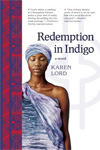 These are given annually for a work from the previous year that best exemplifies "the spirit of the Inklings" (for adult Fantasy) and "the tradition of The Hobbit or The Chronicles of Narnia" (for Children's Literature.) This year the Adult award went to Karen Lord for Redemption in Indigo (Small Beer Press), the Children's award to The Queen's Thief series by Megan Whalen Turner.
These are given annually for a work from the previous year that best exemplifies "the spirit of the Inklings" (for adult Fantasy) and "the tradition of The Hobbit or The Chronicles of Narnia" (for Children's Literature.) This year the Adult award went to Karen Lord for Redemption in Indigo (Small Beer Press), the Children's award to The Queen's Thief series by Megan Whalen Turner.
And the Mythopoeic Awards, too, I see, are open for nominations until February 7—which leaves me very much with the feeling of: "And so it begins … again …"
I think that's one thing about our year of earthquakes here: it feels as though the clock stopped on February 22nd (which it did literally, of course, in some cases) and we've been playing catchup ever since. So for the Awards round to be starting again already for next year—well, I have to wonder, have I been 'lapped'? 
November 29, 2011
A Walk Along the River …
Last week was all about coming out of proof mode and playing catch up, on all sorts of things: correspondence, tax stuff, completing the "Encountering Fantastic Worlds" blog post series (here and here), putting in some serious reading on The Alloy of Law and The Way of Kings (you can see what I thought here), and thinking ahead to what needs to happen next in the world of writing books.
But one thing I realised is that I haven't done an earthquake report for a while and today seems as good a time as any.
Firstly, the earthquakes haven't stopped yet, but they've certainly slowed down a lot—we can go whole series of days now without having any, although there are still a fair number of mid to high 3.0s coming through. It's been a few weeks since we've had a 4.0, though. Having said that, there was a 5.5 as recently as 9 October so I don't think anyone's ready to say "it's over" quite yet.
Demolition remains ongoing all over town, but particularly in the CBD with quite major buildings, such as hotels and high rise office buildings, continuing to come down. The Roman Catholic Cathedral of the Blessed Sacrament has been confirmed as a full demolition, while the Anglican Christ Church cathedral looks set to go the same way. Although a much more modern building, the synogogue was also looking fairly unhappy when I walked past it the other day. (In fact the two most significant casualties of the February 22nd earthquake, the PGG and CTV buildings, were relatively modern so that proved to be no guarantee of anything.)
The demolition continues in the suburbs as well, with lots of gaps in small local centres and some houses going, too—and just up the road, quite a large aged-care facility. But partly because the buildings are smaller, partly because the sites are more dispersed, the effect is not as great as in the central city—you just don't get the same swathes of levelled ground. But today I went for a walk along an area of the river that I used to traverse regularly and really looked, and I have to admit that it was sobering. Not in any overtly dramatic sense, although there have already been demolitions, but just really taking in how very few homes are still inhabited. Most yards were full of unmown grass and overgrowing shrubberies, and while 'ok' at first glance, a closer look at many of the houses showed whole portions that had twisted, or buckled, or slumped forward. After several kilometres of empty neighbourhood I could not help reflecting, after returning to our street, that ok, we've been hard hit, with a lot of repair work still needing to be done—but at least we still have a neighbourhood and the sense of community that goes with it.
And slowly, recovery is happening: the local boys' high school is back on its own site, the pupils no longer being bussed across town; the area mall has re-opened. But those sections of empty neighbourhood I walked through today … to paraphrase "the Boss": "they're going, boys, and they ain't coming back" (from "My Hometown.")
November 28, 2011
Tuesday Poem: "Teddy" by Glenn Colquhoun
…for a child with leukaemia
Teddy was not well.
Teddy had been feeling sick.
Teddy had to go to hospital.
Teddy was told that he had too much blood.
Teddy did not miss his friends.
Teddy knew the thermometer was not sharp.
Teddy was not scared of needles.
Teddy said the medicine would make him better.
Teddy closed his eyes at night.
Teddy ate his vegetables.
.
Teddy's small girl lay in the corner of his bed.
She was not so sure.
Her eyes were made from round buttons.
The fluff on the top of her head was worn
As though it had been chewed.
.
© Glenn Colquhoun, published in Playing God, Steele Roberts, 2002
Reproduced here with permission.
—
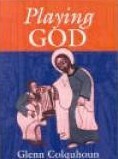 About the Poem:
About the Poem:On October 11 I featured Glenn Colquhoun's poem "She asked me if she took one pill …" as my Tuesday Poem, here. In the background to that poem I wrote:
"On September 16, in a post titled Reflections on What I'm Reading, I talked about poet and doctor Glenn Colquhoun's speech on "The Therapeutic Uses of Ache" to the Royal College of General Practitioners in Wellington in 2009—and how re-reading it "reminded me all over again what an acute observer Glenn Colquhoun is and how I need to read his collection Playing God again, and maybe even share some of the poems with you of a Tuesday."
Playing God was published in 2002 to a level of critical and popular acclaim not often afforded poetry collections, receiving the Montana Award for Poetry and the Montana Readers' Choice Award at the 2003 Montana New Zealand Book Awards.
The collection draws on Colquhoun's experience of medicine … and reflects humour, pathos … frustration and heartbreak …"
No poem expresses that pathos more, in my opinion, than Teddy, and although I chose another poem on October 11, I always wanted to feature Teddy as well—and am very glad to be able to do so here today.
Otherwise I feel the poem very much speaks for itself and anything else I have to say would only get in the way of that.
—
About the Poet:
Glenn Colquhoun is a doctor, poet and children's writer. His first poetry collection, The Art of Walking Upright, won Best First Book of Poetry at the 2000 Montana New Zealand Book Awards. In 2003 he won the Poetry Category and also became the first poet to be awarded the coveted Montana Readers' Choice Award, both awards for Playing God. He has written several children's books and has been the convener of the New Zealand Post Book Awards. In 2004, Colquhoun was the recipient of the prestigious Prize in Modern Letters.
—
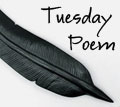 To read the featured poem on the Tuesday Poem Hub and other great poems from fellow Tuesday poets around the world, click here or on the Quill icon in the sidebar.
To read the featured poem on the Tuesday Poem Hub and other great poems from fellow Tuesday poets around the world, click here or on the Quill icon in the sidebar.
November 27, 2011
Encountering Fantastic Worlds, Part 3: SciFi continued
On Friday I looked at the first Science Fiction "worlds" in this series of "Encountering Fantastic Worlds" posts, which began on October 27 with Kids/YA lit and also traversed fantasy for adult readers on November 3 and November 4 respectively. All the worlds selected have been personal favourites, rather than any more objective measure—although I have also tried for a reasonable range, just to keep things interesting. In the first SciFi instalment this meant looking at Dune, the near-future earth of Neuromancer, and CJ Cherryh's Serpent's Reach.
To begin the final three in my list of fantasic worlds, the proper place to start may be last Thursday's post where I paid a personal tribute to Anne McCaffrey (1926-2011), whose storytelling both entralled and inspired me as a teen reader. So looking back to that time, I think the first world on today's list has to be:
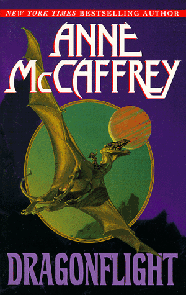 P is for Pern in Anne McCaffrey's Dragonflight (and its many sequels.)
P is for Pern in Anne McCaffrey's Dragonflight (and its many sequels.)
Pern is unquestionably a SF world: a planet settled by space-travelling humans where the "adversary" is "thread", a lifeform that descends through space whenever Pern and a neighbouring planet's orbitary paths come close enough together—to huge destructive effect. So the human colonists genetically engineer fire-breathing dragons to destroy the thread before it reaches Pern's surface … But the world of Pern and dragons is one of the first I encountered where, despite this SciFi premise, the world read essentially as fantasy, since the long-isolated human society has regressed to a low tech, medieval-feudal culture with hold lords and trade guilds, and where the dragons and dragon riders form both a distinct cultural group and a social elite.
Dragons are definitely the star of the Pern show, and the idea of riders with a symbiotic, telepathic bond to their dragons a new and exciting one when Dragonflight (based on the precursor novellas, Weyr Search and Dragonrider) was first published. The symbiotic relationship with dragons also drove a more permissive sexual culture within the weyrs, although this did not translate into much greater socio-political autonomy than in the rest of the feudally-conceived world. The threat of Thread-fall also had consequences for the way the Pernese lived, i.e. in dwellings constructed within rock, since stone was the only substance that thread could not burrow into and destroy. Throw in dragonflight and the ability of dragons to teleport across space and through time, and Pern becomes an exciting as well as a fun SciFi destination.
—
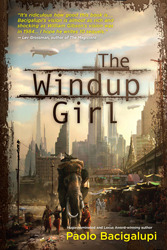 T is for Thailand in Paolo Bacigalupi's The Windup Girl
T is for Thailand in Paolo Bacigalupi's The Windup Girl
So far all the fantastic worlds visited have been longstanding favourites, but also drawn from books published as early as the 1960s (Dune, 1965; Dragonflight, 1968) and no later than the 1980s (Serpent's Reach, 1980; Neuromancer, 1984.) So what about newer tales and worlds? They are undoubtedly out there, but little contemporary SciFi has made much of an impression on me, world building-wise. Paolo Bacigalupi's The Windup Girl is the exception.
The "world" of this story is a medium-future, post peak oil, kingdom of Thailand characterized by gene hacking and genetic engineering, together with associated bio-plagues, where food strains are a tightly controlled commodity. Travel is by dirigible and enhanced clipper ships, and the society is a conflict of cultural, religious and social stratification. Not surprisingly in a society where so much is at stake, it's also a violent world, where refugees and the rest of the poor struggle to find a secure place amidst the conflicts of foreign corporations, both agricultural and technological, a special police force dedicated to eradicating plague sources and rogue gene variants, and the political and military interests struggling for power over genetic manipulation and access to new food strains.
From the opening sequence where the character Anderson Lake identifies a new and illegal (given the genetic patent controlled enforced by the multinational corporates) type of fruit/vegetable (probably of the nightshade family) in a Bangkok market, The Windup Girl presents a vivid, brutal, colourful and above all real world, one you can smell and taste and hear, as well as 'see.' Definitely one of the standouts in my pantheon of science fiction worlds.
—
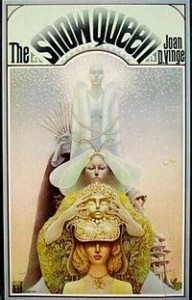 T is also for Tiamat in Joan Vinge's "The Snow Queen"
T is also for Tiamat in Joan Vinge's "The Snow Queen"
The Snow Queen is another longstanding favourite and the world of Tiamat one of the more fascinating worlds of science fiction: a water planet with two red suns orbiting a 'stargate'—a revolving black hole that also serves as a portal for faster-than-light travel from the worlds of the technocratic Kharemough Hegemony. The portal gives the Kharemough access to the "water of life", a life extending substance harvested from Tiamat's native mers—but only for a century or so, during the extended winter season, until the orbital proximity of the Summer Star renders the gate unstable.
But the interest of Tiamat doesn't just end there, it's also a world of three cultures: the native Summer clans and the Winters, both tied to the prolonged winter/summer seasons brought about by the planet's orbit—and with a whole array of cultural and religious belief built around the changeover. The most fundamental of these is that the Winters are cosmopolitan and technologically adept, while the Summers cling to a primitive hunter-gatherer existence. On top of this again, the world of Tiamat also has a strong colonial legacy, with the Kharemough Hegemony imposing their own legal and commercial institutions on the native Tiamat society whenever the stargate opens, in order to control the "water of life" trade. And woven through everything is the role of mers in the planetary ecology and the philosophical function of the sibyls …
Planetology and ecoystem, technology, culture and society, as well as philosophy—taken together I think it's easy to see why Arthur C Clarke called The Snow Queen "a future classic."
—
So there you have it: the final three of my six fabulous worlds of science fiction. Of course, there could have been so many more: Iain M Banks' fabulous Culture 'verse (although how do you begin to describe it?), David Brin's Kithrup in Startide Rising, Winter in Ursula Le Guin's The Left Hand of Darkness, and CJ Cherryh's Downbelow; the Istanbul of Ian McDonald's The Dervish House, and the post-apocalyptic Labrador of John Wyndham's The Chrysalids—and even this is only a very few of scifi's fantastic worlds. At least as many and varied as the amazing worlds of fantasy. Isn't it great?
But what about you? Do you have a favourite SFF world that hasn't been mentioned yet?
November 26, 2011
What I'm Reading: "The Way of Kings" Parts 1 & 2 by Brandon Sanderson
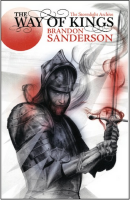 Just lately there have been a few more "Just Arrived" than "What I'm (Actually!) Reading" posts, which is mainly because reading tends to slow down (a lot!) when I'm caught up in those tight deadline, intense concentration, copyedit and proofing stages of my own books.
Just lately there have been a few more "Just Arrived" than "What I'm (Actually!) Reading" posts, which is mainly because reading tends to slow down (a lot!) when I'm caught up in those tight deadline, intense concentration, copyedit and proofing stages of my own books.
But with the proofed manuscript of The Gathering of the Lost in the courier last Monday I have been "reading like anything" to make up for lost time—and because I hope to post an interview with Brandon Sanderson in the next week or so I thought I should make a serious effort to finish The Way of Kings. And yes, by that I do mean Parts 1 and 2, all 1116 pages of it!
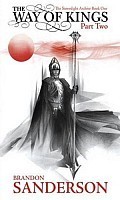 (Just to clarify, this is one book—the first in "The Stormlight Archive" series—but it has been published in two parts of 592 and 524 pages respectively, so you do have to buy two books to get what was intended as the first instalment of the series.)
(Just to clarify, this is one book—the first in "The Stormlight Archive" series—but it has been published in two parts of 592 and 524 pages respectively, so you do have to buy two books to get what was intended as the first instalment of the series.)
On Wednesday when I did my "Just Arrived" post I said in relation to the back cover quote that the story it outlined: "read as classic epic fare, but as with all fantasy, it's not the basic plot, but the characters, the world building, and the execution of the plot that are the proof of the story—so as always I shall look forward to reading and making up my own mind."
So now I've read it and I have made up my own mind. And yes, The Way of Kings is classically conceived epic fantasy—but as I also said on Wednesday, I like classically conceived epic fantasy. And I really liked The Way of Kings. The story does commence in a traditional way, but the story quickly breaks out of any sense of the familiar that may engender, introducing a complex plot and a range of engaging characters caught up in difficult events. The world and its societies are interesting, too, and the evolving magic system intriguing, although I think the main interest in the story does lie with the characters. And the strong desire to know what was happening with Kaladin, the bridgebearer; Shallan, the sheltered noblewoman turned scholar; and Dalinar, the general, kept me absorbed in turning those 1116 pages.
The Way of Kings has pace, action, and character development, and even though I did guess some of the plot twists, these are signaled for the alert reader—and the book has (more than) sufficient depth of story that it need not rely on sleight-of-plot to succeed as a reading experience. I thoroughly enjoyed it and am looking forward to the next instalment.
November 25, 2011
Election Day
Over in the US today it's Thanksgiving; here in NZ it's election day—not quite the same thing those who spend time parliament and politician watching might say …
But I'm not one of them.
As a student of history, I think having an election day and being able to go out and vote is a privilege. Thinking about the issues and what you want for your country and community beforehand is a responsibility and a duty—one we're fortunate to have.
A lot of people have suffered and fought hard, and in many cases died, over many centuries so that I can inherit both the duty and the privilege of voting to decide who will govern this country for the next three years.
As a woman I feel this duty and privilege even more keenly, since it is only 118 years since the right of women to vote on equal terms with men became law.
So yes, that is something I feel like giving thanks for—and so I am going to be going out there and voting today. I hope all New Zealanders reading this blog will be either about to do or have done the same—especially as today's vote includes a referendum on the electoral system as well.
As for the various arguments along the lines of "all politicians are unworthy/venal and so I'm somehow going to protest that by not voting", I've got two things to say:
firstly, I've had dealings with a fair number of NZ politicians in my 'various lives' and believe that most of them are, by and large, in politics because they want to serve their country and communities. Sure they're human and sure that means they're not going to get it right all the time, but they are not bad people—and in the cases where they are, or may become so, it's hard to see how not voting is actually helping that situation in any way;
secondly, if we don't like the way the country's being run and things are being done—we do have the opportunity and yes (that word again!) privilege to do something about it by getting involved. So not voting is just an abrogation of responsibility.
So hey Kiwi, don't be a flightless wonder, be a citizen: have a think about what matters to you for the future, and what you want for your country, and get out there and vote today for the party and electoral system that you think is most likely to deliver that result for you.
November 24, 2011
Encountering Fantastic Worlds, Part 3: SciFi
On October 27 I embarked on a series of posts about encountering fantastic worlds, starting with worlds in Kids/YA lit and progressing to adult fantasy-fiction on November 3 and November 4 respectively. It definitely felt like I was on a roll and I was looking forward to getting into the fantastic worlds of science fiction—when along came the first pass proof for the manuscript of The Gathering of the Lost (The Wall of Night, Book Two), and that, as the saying goes was that: for the next fortnight at least! So it's turned out to be nearly a month from beginning the fantastic worlds' posts until being able to turn my attention back to science fiction–but to contradict Aragorn in movie of The Return of the King: "today is … this day!"
But what am I doing talking about high fantasy—today is about science fiction: from generation ships, to farflung space stations and worlds, as well as the civilizations of galactic futures; to near-future cyberpunk and medium future biopunk dystopias; from 'almost fantasy', through space opera, to hard scifi. Actually, it wasn't until I started to write this post that I realised what a huge variety of worlds there were and how many of them have rocked my … um … ok … milieu. (OK, ok, I give in, because of course Julian May's 'Galactic Milieu' is another SF world!)
I've decided that the only possible way to do this, given the array of fantastic worlds out there, is to stick with personal favourites—so complete subjectivity here I come! And as usual, we're working through 'em in alphabetical order.
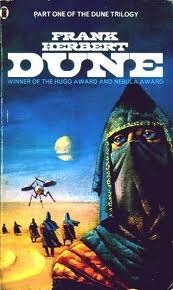 D is for Dune by Frank Herbert
D is for Dune by Frank Herbert
As a young teen, innumerable peers and older readers assured me that I would love this book. Needless to say, in the inimitable way of those in their early teens, I immediately resolved never to read it. Besides, I didn't like the cover–I thought it looked gloomy and bor-ing. I can't recall what made me eventually give in. Perhaps I sneaked a look at the back cover copy and wavered on that "boring" verdict; maybe it was just that by that stage I had pretty much read my way through the whole school library and it was either give in or face that most awful of fates: having nothing to read. But succumb I did—and from that very first, opening description of the water-rich world of Caladan, I was hooked by the fantastic world that is Frank Herbert's Dune.
Obviously it is the unforgiving desert planet of Arrakis, aka 'Dune', with its giant sandworms and fabulous spice wealth that is the core of the world in an "eco" sense, but for me world building is also about the societies and cultures, the mythologies and histories built around the physical worlds. In Dune, Frank Herbert gives us not just the warring great houses, such as the Atreides and the Harkonnen, but the secret political sisterhood of the Bene Gesserit with their messianic genetic manipulation programme, the Navigator's Guild that uses the Arrakeen space to navigate across space-time, the fanatical Fremen who live in the deep deserts, and the Mentats, the human 'computers' who have evolevd in a universe that outlawed artifical intelligence. I think there are few worlds in SFF that have both the breadth and depth of Dune—and that is why I will always be grateful that I overcame my teen stubborness and read the book!
.
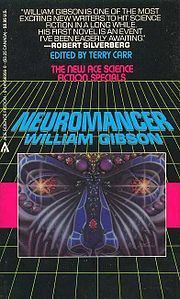 E is for Earth—in William Gibson's Neuromancer (and related novels)
E is for Earth—in William Gibson's Neuromancer (and related novels)
I am ashamed to admit that Neuromancer is another book that I resisted reading because I didn't like the cover of the particular edition that resided on my then boyfriend's book shelf. And because the several recommendations I'd received made it sound like a book based on what I term techno-babble. (And as I indicated in the SF-Signal Mind-Meld I did earlier this month, here, I like my books to have story and character, not just a melange of ideas, interesting or otherwise.) But once again, I succumbed—in this case because I was stuck in a very provincial centre on a rainy night and Mona Lisa Overdrive (the third in the Neuromancer milieu) was definitely the best of a thin selection in the about-to-close local stationer's.
Well, I LOVED Mona Lisa Overdrive and cyberpunk SF William Gibson-style: this, dear readers, was definitely not techno-babble and I knew that I was going to have to read Neuromancer (and it's sequel, Count Zero) now, at once, immediately!
But although I read Mona Lisa Overdrive first, it has to be "Earth as in Neuromancer" because that is the novel that set up the world. This is a near-future milieu of what I call "grunge-dystopia", where pollution, disease, and poverty are rife, nation states have fragmented, corporations are the world's power brokers and data is its own currency. It's a world where cyberspace itself is a 'verse, one in which hackers and cyber pirates try to circumvent the "ice" (tecnological security) protecting corporate databanks; and where the backdrop culture comprises "black clinics" (for plastic surgery and genetic modification), data couriers, and "razor girls" (ronin assassins/security guards.) The Earth of Neuromancer is also that of the 'ghost in the machine', emerging artificial intelligences and their interaction with the human society that created them—and where colonies have evolved onto orbiting space stations, mostly for the rich and privileged, but with such divergent additions as the "Rastafarian navy." (Love the Rastafarian navy!)
It's a fabulous, mindblowing world—to visit between the covers of a book if not to live in; although looking around at the way the world is going …
.
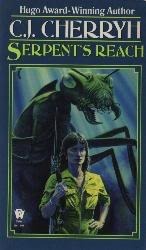 H is for the Hydri Reach in CJ Cherryh's Serpent's Reach
H is for the Hydri Reach in CJ Cherryh's Serpent's Reach
The quarantined Hydri or "Serpent's" Reach is a star system comprising several planets that feature in the story, primarily Cerdin and Istra. But the interest of the Serpent's Reach "world" is not in its physical parameters or individual planets but in the society it depicts. The system is home to the indigenous majat, an insectoid species—think giant 'ants' for ease of translation—that produce trade goods invaluable to wider human space culture. But that same culture is terrified of majat "breakout" and so the star system and the humans who pioneered trade there have been "quarantined"—literally forbidden to leave.
Serpent's Reach explores the fascinating "world" this creates: the majat "hive' society and its symbiotic relationship with the rich, supremely powerful and longlived, but also corrupt Kontrin—the "hive friends" who act as envoys and intermediaries to the majat and the incredible wealth the hive trade generates. But the Kontrin have created their own supporting human society, in parallel with that of the majat: the Betas—what we would recognise as "normal" human beings—and the Azi, genetically engineered humans with an inbuilt termination date, who are bred as a source of slave labour for the majat; and incidentally the rest of human society.
Serpent's Reach has long been one of my favourite CJ Cherryh novels, because the dynamics of the 'world' that CJ Cherryh has created sets up a powerful—but also pschologically dark—story, one that includes strong horror elements when fratricidal infighting within the Kontrin spills over into their alliances with the majat and threatens the entire human society within the Hydri star system, a system where they are now trapped …
—
So that's it for today, the first three of my fantastic worlds of SciFi. I will be back soon with another 3—or so, depending on whether I can limit myself to 'just that.' 
November 23, 2011
A Personal Tribute: Anne McCaffrey, 1926-2011
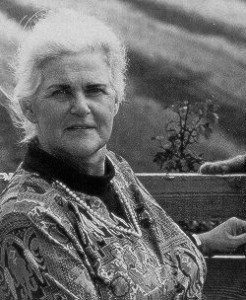 Many of you will already know the news that came out yesterday, that science fiction writer, Anne McCaffrey, has died, aged 85, at her home in Ireland.
Many of you will already know the news that came out yesterday, that science fiction writer, Anne McCaffrey, has died, aged 85, at her home in Ireland.
Anne McCaffrey's first novel, Restoree, was published in 1967 and she went on to author such well known works as the Dragonriders of Pern, Crystalsinger, and Rowan series, and such classics as The Ship Who Sang.
She was the first female author to win a Hugo Award for a work of fiction: for the novella, Weyr Search (a forerunner of Dragonflight) in 1968, and the first female author to win a Nebula Award, for Dragonrider, in 1969. The third book in the original series, The White Dragon, is held to be the first science fiction novel to make the New York Times Besteller List.
Of her first novel, Restoree, Anne McCaffrey always said she wrote it because: "I was so tired of all the weak women screaming in the corner while their boyfriends were beating off the aliens. I wouldn't have been—I'd've been in there swinging with something or kicking them as hard as I could."
 What can I say? Restoree was the first Anne McCaffrey book I read, when its combination of a smart resourceful heroine at the centre of the action, together with its strong romantic elements, was everything a mid-teen reader could wish for. I quickly progressed to Dragonflight, which I also loved (and now feel its much the stronger book, while retaining a considerable soft spot for Restoree), and The Ship Who Sang, both of which I consider classic science fiction. No question, Anne McCaffrey was both an inspiration and an influence on me as a science fiction-fanatsy reader and aspiring author—for showing me that science fiction could be adventurous, both smart and fun, but most of all that it was unquestionably a kind of storytelling that women did—both as authors and central protagonists.
What can I say? Restoree was the first Anne McCaffrey book I read, when its combination of a smart resourceful heroine at the centre of the action, together with its strong romantic elements, was everything a mid-teen reader could wish for. I quickly progressed to Dragonflight, which I also loved (and now feel its much the stronger book, while retaining a considerable soft spot for Restoree), and The Ship Who Sang, both of which I consider classic science fiction. No question, Anne McCaffrey was both an inspiration and an influence on me as a science fiction-fanatsy reader and aspiring author—for showing me that science fiction could be adventurous, both smart and fun, but most of all that it was unquestionably a kind of storytelling that women did—both as authors and central protagonists.
So I would like, not just to remember and celebrate Anne McCaffrey, but to thank her: for the stories and for putting women centre stage in SFF.
November 22, 2011
Just Arrived: "The Way of Kings" Parts 1 & 2 by Brandon Sanderson
 You may recall that my most recent "just arrived" was Brandon Sanderson's Alloy of Law, here—and yesterday the two parts of the first book in his The Way of Kings epic series arrived as well, which pleases me since I do like to be up to speed with an author's recent works before I do an inteview.
You may recall that my most recent "just arrived" was Brandon Sanderson's Alloy of Law, here—and yesterday the two parts of the first book in his The Way of Kings epic series arrived as well, which pleases me since I do like to be up to speed with an author's recent works before I do an inteview.
And of course it was The Way of Kings that won Brandon Sanderson the Gemmell Legend Award (for the best heroic fantasy novel), here, earlier this year. So I am going to enjoy comparing his Mistborn 'western' (Alloy of Law) with The Way of Kings, which appears to be more classically conceived epic fantasy—and as you all know, that tends to be something I enjoy. (Although as confessed in relation to Alloy of Law, I have a more than passing fondness for a good western as well.  )
)
 So what does it say on the back cover:
So what does it say on the back cover:
"Roshar is a world of stone and storms. Its terrifying and frequent tempests have shaped ecology and civilization alike … It has been centuries since the fall of the ten consecreated orders known as the Knights Radiant, but their Shardbaldes and Shardplate remain: mystical swords and suits of armour that transform ordinary men into near invincible warriors. Men trade kingdoms for Shardbaldes. Wars were fought for them, and won by them.
One such war is about to swallow up a soldier, a brightlord, and a young woman scholar."
Well, it certainly does read as classic epic fare, but as with all fantasy, it's not the basic plot, but the characters, the world building, and the execution of the plot that are the proof of the story—so as always I shall look forward to reading and making up my own mind.




